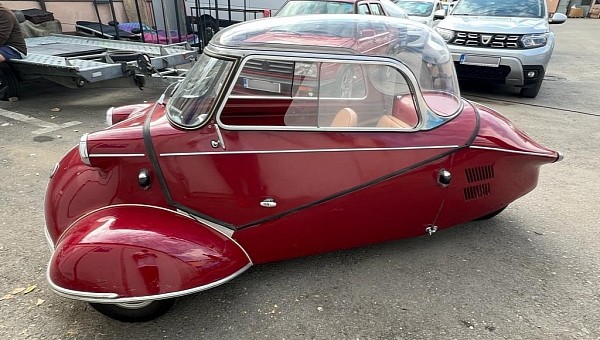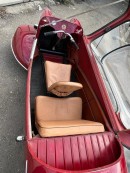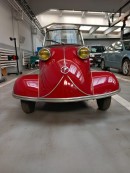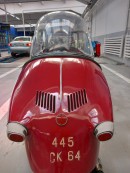Everyone seems to be talking about switching to electric and complicated new cars, but they get excited when they meet a well-maintained classic on the streets. The Messerschmitt KR175 is one of them.
Messerschmitt, the company that built Germany's famous World War II fighter jets, has given up its name to build a two-seater ladybug with an engine.
The first model was called the KR175, was based on a vehicle for the disabled, and sold around 15,000 examples, after which it was replaced by the KR200. The second Messerschmitt sold around 40,000 between 1955 and 1964. Both became highly sought after by collectors, even Romanian ones.
A Messerschmitt KR175, this three-wheeled micro legend was photographed far from its homeland of Germany. The little German car has been homologated somewhere in Romania, with photos of it being published by the institution that deals with registering vehicles of all kinds (old and new).
It is the first Kabinenroller variant of the famous WWII German aircraft manufacturer, which made its debut in 1953 and was replaced by the KR200 variant in 1956.
The name comes from its 175 cc, two-stroke, single-cylinder engine developing around 11 PS and a maximum torque of 12.75 Nm (around 9 ft-lb). It has two steering wheels at the front and a single one at the rear that also does the traction, and according to the manufacturer, it can reach a top speed of 80 kph (50 mph). It's worth remembering that the car had a 4-speed manual transmission, and performance such as the 0-62 mph sprint is not worth mentioning because it is far from a sports car. According to the description, the car has the original paintwork.
Messerschmitt KR175 was one of many unusual micro-cars launched in Europe after World War II. They were created to meet an urgent need for transport that was cheap to buy and economical to operate.
The first model was called the KR175, was based on a vehicle for the disabled, and sold around 15,000 examples, after which it was replaced by the KR200. The second Messerschmitt sold around 40,000 between 1955 and 1964. Both became highly sought after by collectors, even Romanian ones.
A Messerschmitt KR175, this three-wheeled micro legend was photographed far from its homeland of Germany. The little German car has been homologated somewhere in Romania, with photos of it being published by the institution that deals with registering vehicles of all kinds (old and new).
It is the first Kabinenroller variant of the famous WWII German aircraft manufacturer, which made its debut in 1953 and was replaced by the KR200 variant in 1956.
The name comes from its 175 cc, two-stroke, single-cylinder engine developing around 11 PS and a maximum torque of 12.75 Nm (around 9 ft-lb). It has two steering wheels at the front and a single one at the rear that also does the traction, and according to the manufacturer, it can reach a top speed of 80 kph (50 mph). It's worth remembering that the car had a 4-speed manual transmission, and performance such as the 0-62 mph sprint is not worth mentioning because it is far from a sports car. According to the description, the car has the original paintwork.
Messerschmitt KR175 was one of many unusual micro-cars launched in Europe after World War II. They were created to meet an urgent need for transport that was cheap to buy and economical to operate.







